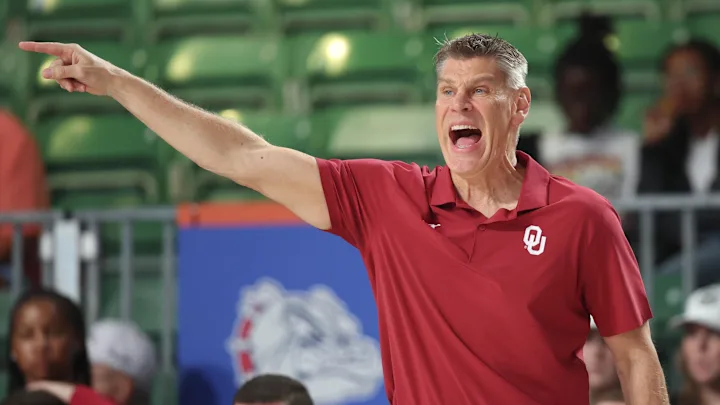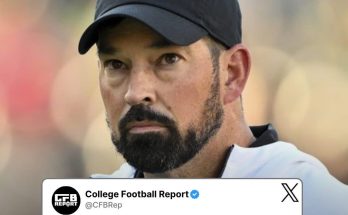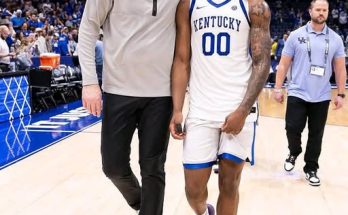Is the Era of Porter Moser Coming to an End at Oklahoma?
The landscape of college basketball is ever-changing, and one of the most notable programs in the Big 12 Conference, the Oklahoma Sooners, is currently facing a period of transition. Porter Moser, hired as the head coach of Oklahoma’s men’s basketball team in 2021, was seen as a promising hire—one who would bring a new energy and philosophy to a program that had experienced both success and inconsistency in the years prior. However, after a series of challenges and underwhelming results, questions have begun to surface about whether Moser’s tenure at Oklahoma is on the verge of coming to an end.
The 2025 season represents a critical juncture for Moser and the Sooners. While it’s far too early to definitively say whether Moser will continue to lead the program in the long term, it is clear that the pressure is mounting. So, is the era of Porter Moser at Oklahoma nearing its end, or is the coach simply facing growing pains that are common with building a program?
This article will examine the current state of Oklahoma basketball, the challenges that Moser has faced, and the larger context in which he is coaching. From team performance to fan and administrative expectations, we’ll assess whether the writing is on the wall for Moser’s time in Norman or if he has the tools to weather the storm and restore Oklahoma basketball to a competitive level.
Porter Moser’s Arrival at Oklahoma: A New Beginning
When Porter Moser was hired as Oklahoma’s head coach in 2021, he came to the program with a solid track record. Moser had spent over a decade building Loyola-Chicago into a national powerhouse on the mid-major level. His most notable achievement at Loyola was guiding the Ramblers to the Final Four in 2018, a run that captured the attention of college basketball fans across the country. Moser’s defensive-minded, disciplined approach was exactly what Oklahoma was hoping for when they made the decision to move on from Lon Kruger, the former head coach who had led the program to consistent NCAA Tournament appearances but had failed to elevate it to the upper echelon of college basketball.
Oklahoma athletic director Joe Castiglione sought to bring in a coach who could develop young talent, build a sustainable program, and return the Sooners to national relevance. Moser’s pedigree as a defensive strategist and program-builder was appealing, and he appeared to be a perfect fit for the job.
However, the expectations were clear from the outset: Oklahoma basketball needed to get back to being a contender in the Big 12, one of the toughest conferences in college basketball, and a program that could routinely make deep runs in the NCAA Tournament. Moser inherited a program with a solid foundation, but one that had faced stagnation in recent years.
Early Struggles: The Growing Pains of Building a Program
It’s not unusual for a new coach to face early struggles when taking over a program, and Moser’s first two seasons at Oklahoma have certainly been indicative of that. While the Sooners have shown flashes of brilliance at times, consistency has been hard to come by. In Moser’s first season (2021-2022), Oklahoma finished with a disappointing 19-16 record and was ultimately left out of the NCAA Tournament. While some may argue that the team was simply unlucky or that Moser was still implementing his system, the reality was that the Sooners fell short of the expectations set for them.
The following year, 2022-2023, didn’t see much improvement in terms of results. Oklahoma again struggled to find consistency and posted a similar 19-16 record. The Sooners made a modest appearance in the NIT, but this wasn’t the success that was expected. The Big 12 continued to be a tough conference, with teams like Kansas, Baylor, and Texas competing for national titles year after year. Oklahoma, however, found itself on the outside looking in when it came to NCAA Tournament contention.
The underperformance has led to mounting frustration among fans, and the pressure on Moser has steadily increased. This sense of urgency has intensified as other Big 12 programs, most notably Kansas, have continued to thrive, leaving Oklahoma feeling as though it is stuck in mediocrity. So, what exactly has led to Moser’s underwhelming results so far?
Challenges Moser Has Faced
There are several factors that have contributed to the struggles of Porter Moser and the Oklahoma basketball program:
- Inconsistent Recruiting: Recruiting is arguably the most important aspect of college basketball, and it’s clear that Moser has struggled to recruit the level of talent necessary to compete in the Big 12. Oklahoma has landed some decent recruits, but they haven’t been able to secure the high-level prospects that some of the other programs in the conference have been able to attract. Moser’s success at Loyola-Chicago was built around developing players and creating a strong team dynamic, but in the Big 12, the competition is fierce, and the Sooners need blue-chip players to make the leap to the next level.
- Transfer Portal Struggles: Like many programs, Oklahoma has been active in the transfer portal. However, unlike programs that have successfully leveraged the portal to build competitive rosters, Oklahoma has not seen the kind of immediate impact transfers that other programs have enjoyed. This has created an imbalance in the roster and has left Moser with a team that has had difficulty competing with the deep and talented rosters of its Big 12 counterparts.
- Injury and Depth Issues: The lack of depth on the roster has also played a role in Oklahoma’s struggles. While the Sooners have had some talented players, injuries have hurt their chances at sustained success. Oklahoma has not had the same level of depth that other programs like Kansas, Baylor, and Texas can rely on, leading to inconsistency in performance over the course of the season.
- Defensive Identity Not Fully Established: Moser’s reputation as a defensive-minded coach was one of the primary reasons he was hired, but his system has not fully taken hold in Norman. While Oklahoma has been competitive defensively at times, they’ve lacked the shutdown defense that Moser was known for at Loyola-Chicago. Without a clear defensive identity, Oklahoma’s offense has often been forced to carry the team, which has put undue pressure on a roster that hasn’t been able to produce at a high level.
- Big 12 Competition: The Big 12 is arguably the toughest conference in college basketball. Programs like Kansas, Baylor, and Texas have been consistently ranked among the best teams in the country, while Texas Tech and others have made deep runs in the NCAA Tournament. For a coach like Moser, who is still building his program, it’s difficult to navigate a league that is constantly full of elite talent and national championship contenders.
Expectations and Pressure Mounting for Moser
Despite the challenges Moser has faced, it’s clear that expectations for the Oklahoma Sooners are rising, and that brings with it increased pressure on Moser. The sooner Oklahoma sees tangible progress, the more likely it is that Moser’s tenure will be secure. However, if the Sooners continue to underperform, the heat on Moser could increase to the point where his job is in jeopardy.
The big question, however, is whether Moser has the ability to overcome these challenges and return Oklahoma to national relevance. While it is still early in his tenure, the patience of fans and the administration may start to wear thin. It’s not just about making the NCAA Tournament; it’s about competing at a high level, attracting top-tier recruits, and building a team that can make deep runs in March.
The Impact of New Leadership
If Moser’s tenure does come to an end, it will be important for Oklahoma to consider the impact of new leadership. Joe Castiglione, Oklahoma’s athletic director, has consistently shown the ability to hire coaches who can bring success to their programs. If the university decides to part ways with Moser, the next hire will have an important task at hand—continuing to build the program’s identity while competing at the highest levels of college basketball.
Oklahoma is a program with a rich basketball history, and the next coach will be expected to revive that tradition. Whether Moser is the coach to do that or not will likely depend on how well he navigates the challenges in the 2025 season and beyond.
Conclusion: A Pivotal Moment for Moser and Oklahoma Basketball
As the 2025 season approaches, the era of Porter Moser at Oklahoma hangs in the balance. While the Sooners have shown flashes of potential under Moser’s leadership, the program has failed to reach the level of success that fans and administrators expect. With the pressure mounting for Moser to deliver, it remains to be seen whether he can build a consistent, competitive program that can thrive in the brutal Big 12 conference.
If Moser can’t turn things around in 2025, it’s possible that his time at Oklahoma could come to an end sooner than expected. However, if he can recruit better, develop his players, and establish a strong defensive identity, Moser could very well secure his place in Norman for the long haul.
For now, the future of Porter Moser and Oklahoma basketball is uncertain, but one thing is clear: this is a pivotal moment for both the coach and the program.



